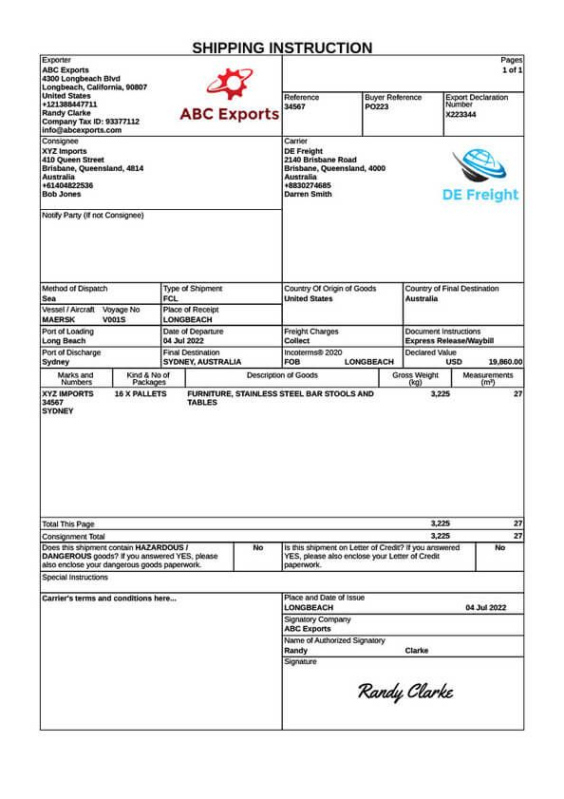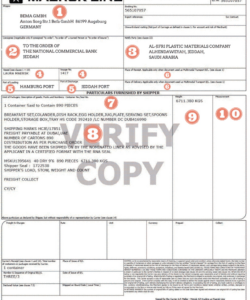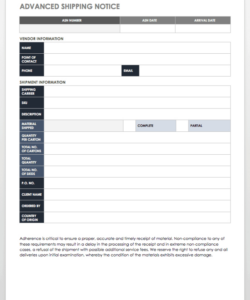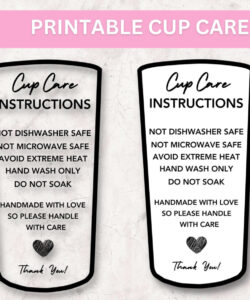Import clearing instruction template. Do you often find yourself repeating the same explanation time and again? Whether it’s in the office, at home, or attempting to teach your dog a new trick, clear directions are crucial. But creating those flawless, easy-to-follow directions can be unexpectedly challenging. That’s where an instruction template becomes beneficial. It offers a structure for organizing your ideas and making sure your message is conveyed clearly.
Instruction templates are a strong instrument for simplifying communication and keeping everyone aligned. They give a clear format for presenting information, facilitating easier understanding and adherence to instructions. From simple checklists to detailed step-by-step guides, an effective instruction template can greatly enhance clarity, minimize mistakes, and increase overall productivity.

Think about trying to build a piece of furniture without any guidelines. Annoying, isn’t it? The same principle holds for any job, no matter the size. An instruction template provides a framework for clear, concise, and easy-to-follow instructions. It helps you arrange your thoughts, guaranteeing you cover all the essential steps and details. This reduces the chances of errors and misinterpretations, leading to better results and increased efficiency.
Secondly, an instruction template can help ensure you don’t miss important steps. By providing a pre-established structure, it reminds you to include all the vital details. This reduces the risk of excluding key information that could result in mistakes or frustration. For example, if you’re drafting instructions for constructing a piece of furniture, a template might prompt you to add details about the necessary tools, the sequence of assembly, and any safety measures.
Thirdly, instruction templates can help you save a substantial amount of time. Instead of creating instructions from the ground up every time, you can simply use a template and fill in the blanks. This releases your time to focus on the content instead of the structure. Imagine the time saved with a ready-made template for weekly reports, lesson plans, or email newsletters.
Finally, an instruction template can improve accessibility. By using a structured format, you create instructions that are easier to access for people with different learning styles and capabilities. A properly constructed template can integrate visual aids, clear headings, and straightforward language, making it easier for everyone to grasp and follow the guidelines. This is crucial for inclusion and clear communication.
The first step in creating an effective instruction template is identifying your target audience. Who are these instructions for? What is their level of knowledge and experience? Understanding your audience will help you tailor the language and complexity of the instructions accordingly. A template for seasoned technicians will be quite different from one created for beginners.
Next, clearly define the objective or goal of the instructions. What should the user attain after executing these steps? A clear objective offers context and aids users in comprehending the purpose of the instructions. This is especially important for more complicated tasks or processes.
Once you have a clear objective, break down the task into small, sequential steps. Each step should be concise and easy to understand. Avoid using complex terminology or technical terms that your audience may not understand. Use clear and simple language that everyone can understand.
Consider incorporating visuals. Visual aids like images, diagrams, and flowcharts can significantly boost the clarity of your instructions. Visual aids can help illustrate complex concepts and make it easier for people to follow the steps involved. A visual can often explain more than words, especially in illustrating a process.
Lastly, always test your instruction template. Get someone new to the task to follow your instructions and offer feedback. This will help you spot any areas that require further explanation or enhancement. Testing your instructions is crucial to make sure they are practical and user-friendly. This also helps you verify that your instruction template fulfills its function.
In summary, an instruction template is a valuable tool for anyone who needs to convey information clearly and efficiently. Whether you’re composing a user guide, creating a training document, or just explaining a task to a teammate, using a template can save time and effort, ensuring that your instructions are straightforward and easy to follow.
By adhering to the tips mentioned above, you can develop effective instruction templates that enhance clarity, ensure consistency, and increase productivity. So, the next time you catch yourself explaining the same thing over and over, think about using an instruction template. You might be surprised at how much easier it makes your life.





